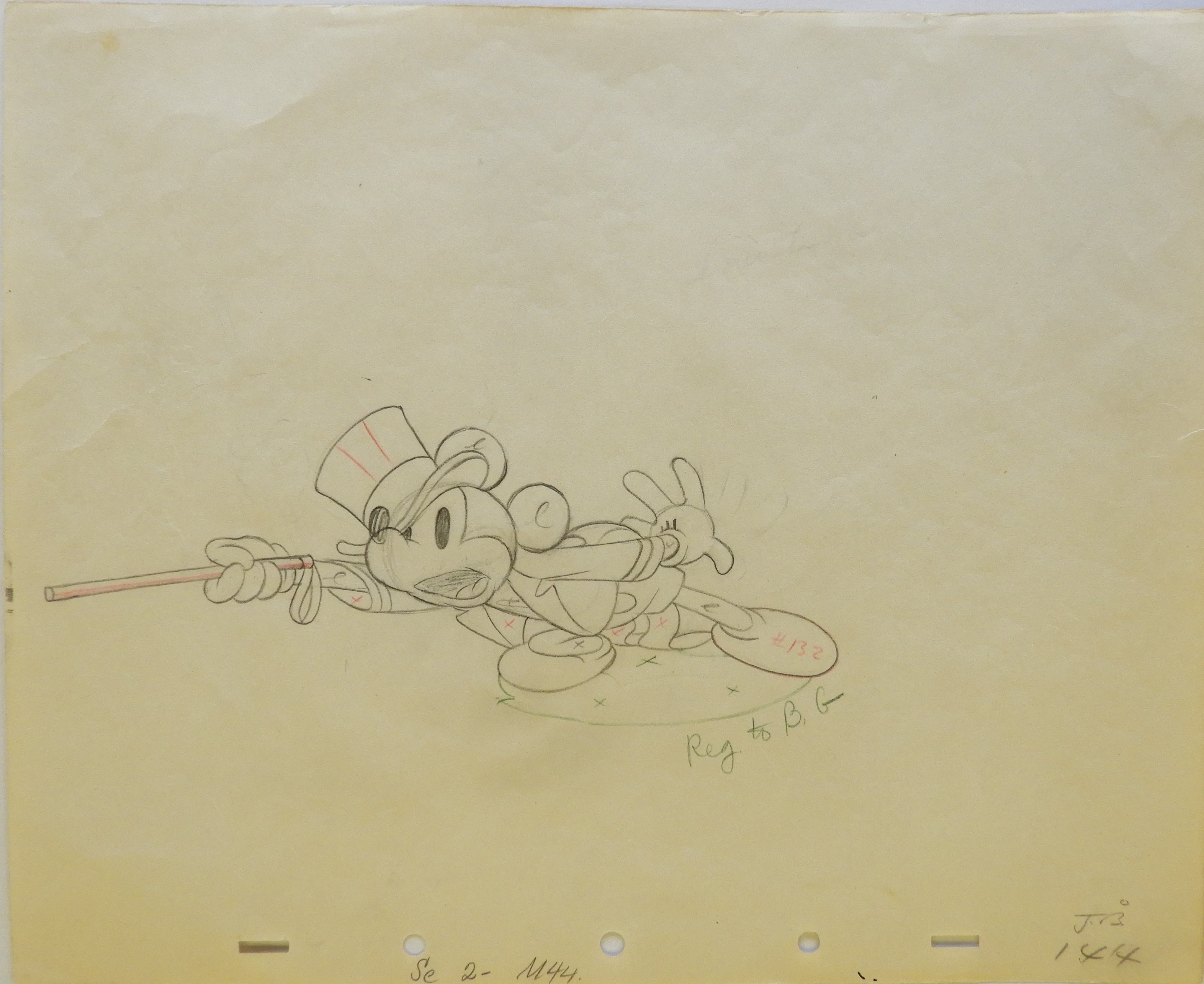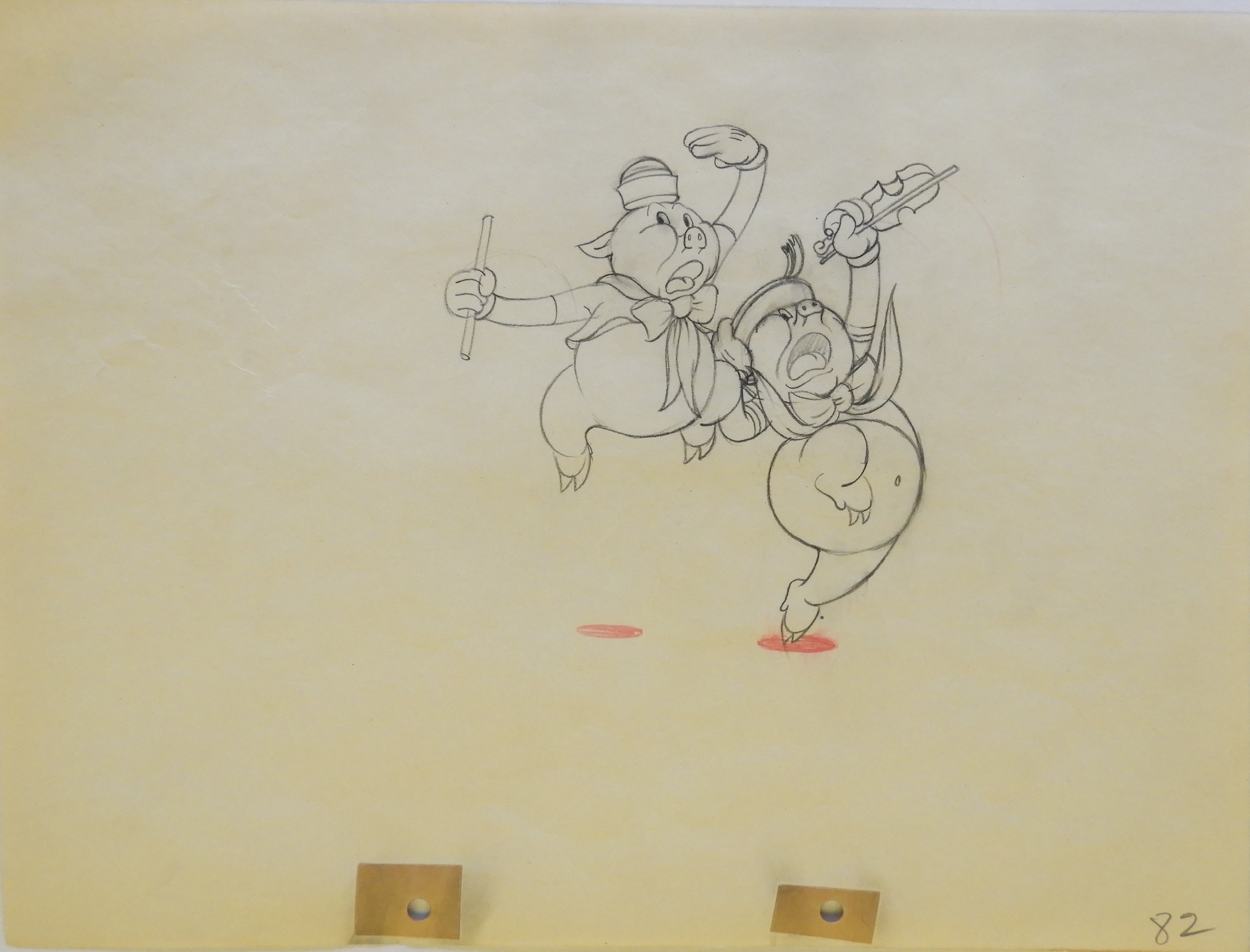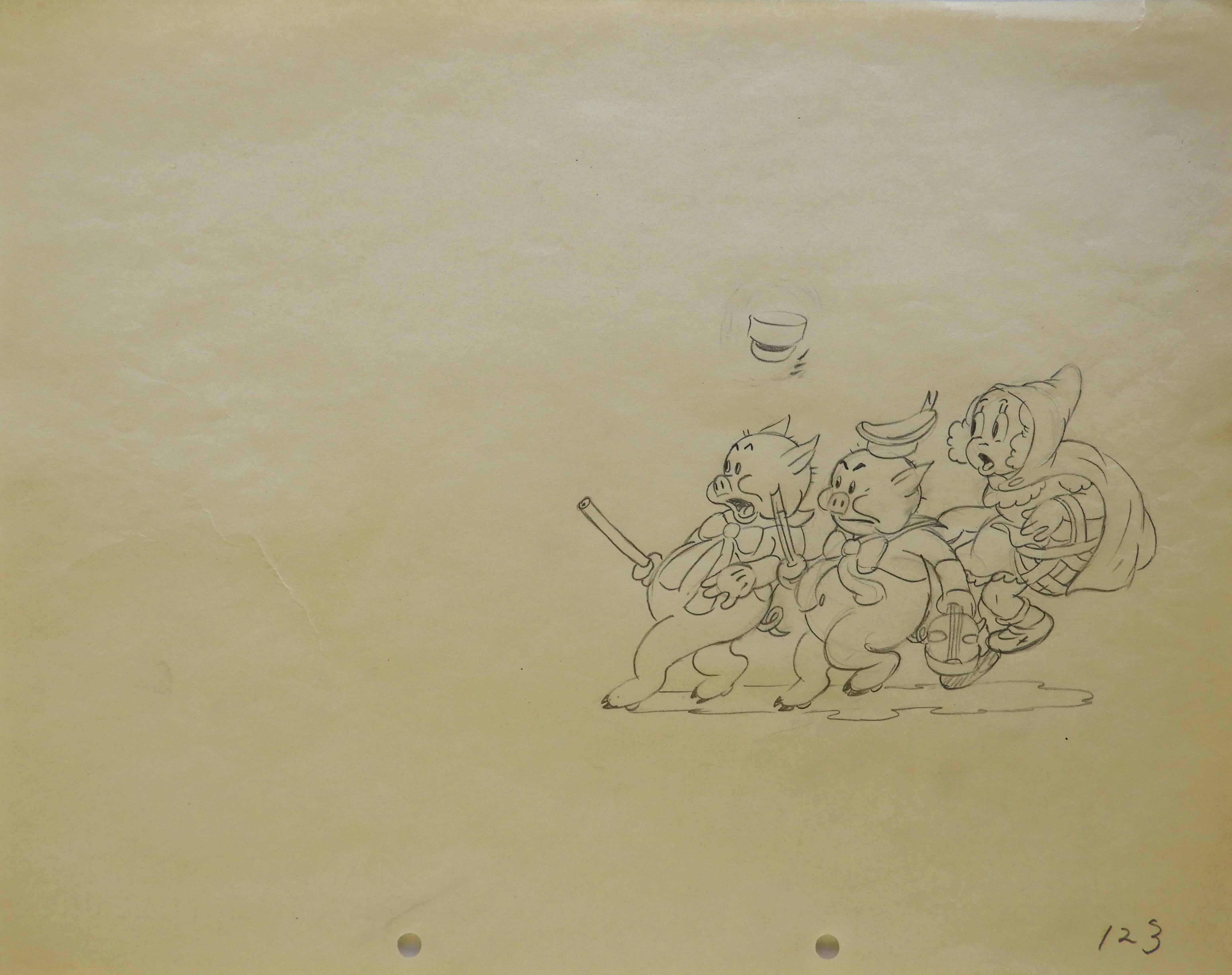Disney’s most memorable cartoon characters have come to McGill’s Visual Arts Collection. A new acquisition of Disney material, donated by long-time supporter of the Collection, Dr. Joanne Jepson (M.D.C.M. ’59), includes a multitude of sketch prints and celluloid images that were used in the production of early Disney cartoons. At a time when cartoon art practices are increasingly digitized, these early production drawings showcase the real-time creation of iconic Disney images drawn by hand.
Mickey Mouse, who celebrated his 90th birthday last year, is a highlight feature of the new Disney donation. Mickey made his first public debut in Walt Disney’s breakout short film Steam Boat Willie (1928), which was among the first cartoons to incorporate sound. In later years, the Great Depression became Mickey’s backdrop for success: his cheerful demeanor and uplifting attitude captivated dismal audiences across America. Mickey was an underdog that American audiences could root for as they escaped from their own. He became emblematic of Disney’s ability to bring us fun in a time of desperation. The famous mouse is seen in Fig. 1: a hand-drawn production sketch for the 1936 short film Mickey’s Circus. Here, he introduces the spectacle, welcoming all viewers to join him in a moment of delight. In the short, Mickey’s efforts are frustrated by the rambunctious circus animals who steal the show, but he perseveres regardless. In examining the paper, one feels incredibly close to the process: markings show the animator indicating color (red and green x’s and lines), leaving notes (written throughout), and even rethinking his choices (erased lines by Mickey’s hands and hat).
The Disney series Silly Symphonies, which debuted in 1929, was innovative in format, introducing new characters and a new story in every episode. It featured classical songs and narratives that often aimed to teach viewers a moral lesson. The 1933 episode featuring the tale of the Three Little Pigs was especially popular, with theaters continuing to play it week after week, much longer than any of the earlier shorts. Two production sketches for the episode are featured in this new acquisition, seen here in Figs. 2 and 3. The reason for the episode’s popularity is likely due to the narrative’s overarching theme that hard work pays off, especially in the face of adversity.
The optimistic message of these shorts, and of many others produced by Disney at this time, allowed these iconic characters to rise above their status as entertainers; they became emblems of hope and perseverance for struggling audiences. Their hopeful message was by no means universally accessible, though. Importantly, many scholars trace the origins of Mickey Mouse’s character to blackface minstrel entertainment. And as the Disney enterprise flourished, millions of Americans still struggled to put food on the table.
As we work to preserve these popular images of perseverance, and make them available for research and study, we must keep in mind not only their intended message but their multiple audiences and the social context from which they emerged.
-Written by Madeline Holton and Camille Crichlow, ARIA (Arts Research Internship Award) Interns at the Visual Arts Collection















Leave a Reply
You must be logged in to post a comment.